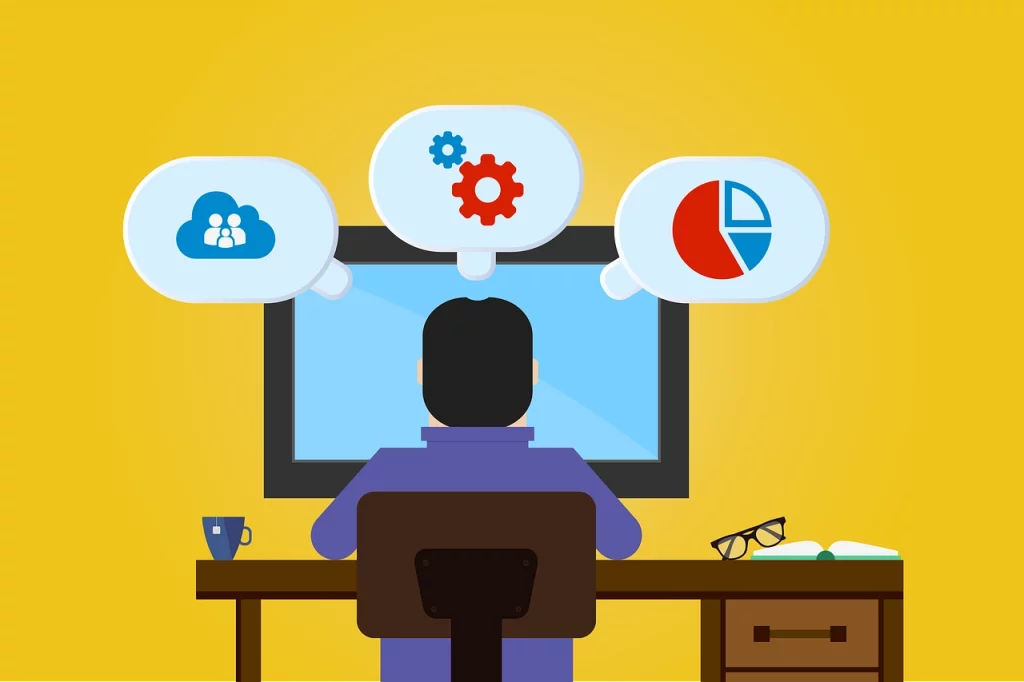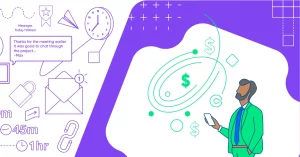Why Rafiki
Pricing


Pricing
Solutions

RevOps Leaders
Synchronize revenue generating functions

SDR Leaders
Get your team aligned and Coach your Reps 3x faster at scale

Sales Leaders
Unlock pipeline truth, drive confident forecasts

Not everybody has a correct understanding of what a good sales strategy looks like. Sales reps don’t have to be the annoying, pushy people who invade your privacy at every opportunity and hound you with offers, as portrayed in movies.
Most of the time, the sales process in small- and medium-sized companies is disorderly and unstructured, making it difficult to predict revenue. This affects other things like setting revenue goals, generating cash flow, and determining hiring needs.
Essentially, without a pipeline, you’re going into selling wearing a blindfold—with no idea of where you’re going to end up. Building a well-defined sales pipeline can help sales leaders develop a sound sales strategy and gain insights into the sales process.
Here, we’ll take you through the sales pipeline definition, discuss the different sales pipeline stages, outline the steps required to build a sales pipeline, and describe best practices in sales pipeline management.
“A sales pipeline is a visual representation of the progress of multiple leads (opportunities) through the different stages in the purchasing process.”
Reps use the information in a sales pipeline to determine which leads they should focus on, where they need to put in the effort, and how much sales they’re likely to make in the next few months.
Prospects move through the sales pipeline depending on factors like the degree of urgency, level of interest, amount of research done, and so on.
Note that a sales pipeline includes all the prospects that reps are dealing with, whether new or mature, whereas a sales forecast is an estimate of the opportunities that are likely to close within a given time period.
Also, the sales pipeline includes all the steps that a rep takes as part of the sales process to move deals from start to close, but a sales funnel includes the stages in the buying process that your leads go through before becoming customers.

There are 7 stages in a sales pipeline:
1) Lead generation/Prospecting – Through promotional activities like public relations, advertisements, and non-paid campaigns, you let potential customers know about your business. You create an ideal customer profile and use targeting parameters to communicate your message to potential buyers who fit that profile.
2) Lead qualification – You offer lead magnets like ebooks, white papers, and webinars to see if the prospect is interested in learning more about your business.
3) Initiating contact - You contact the prospect to have an initial conversation to know more about their requirements.
4) Schedule a meeting or demo – If the prospect shows interest, you schedule a demo to showcase your offerings or a meeting with the decision-maker to make a start toward negotiations.
5) Negotiation – You negotiate with respect to price, the scope of work, expectations, and so on to arrive at a mutually beneficial decision. You submit your proposal that states your competitive advantage and demonstrates value.
6) Closing the deal – If the negotiations are successful, you close the deal and consider the opportunity won.
7) Post-purchase – You continue to nurture the prospect even after the contract has been signed. You find opportunities to cross-sell, upsell, renew contracts, or ask for referrals.
These stages may vary from industry to industry, but the basic framework remains the same.
Now let’s see how you can build a sales pipeline that suits your business.
There are 8 main steps you can take to build your sales pipeline:
1) Define the stages of your sales pipeline
You can define the stages of your pipeline by taking a closer look at your typical buyer’s journey. A customized approach will save you time, effort, and money down the line.
Customers go through these steps when making a purchasing decision:

The stages of your sales pipeline could be:
2) Identify how many prospects typically continue through each stage
How long does a prospect typically spend at each stage, both for those that close and overall?
This information will help reps predict which prospects are more likely to close. For instance, typical prospects may spend a week at each stage, but prospects that become customers typically spend three weeks.
It also helps to know the percentage of prospects that usually move on to the next stage.
Determining a conversion rate for each stage will help you set monthly/quarterly revenue estimates. For example, 60% of prospects in the demonstrate value stage are likely to close, whereas 90% of prospects in the negotiation stage are likely to close.
3) Calculate the number of opportunities you need at each stage to hit your goals
Back-calculate to determine how many prospects you need at each stage to meet your revenue goals.
For example, if you need to win 150 deals and 60% of your prospects in the demonstrate value stage are likely to close, 250 prospects must reach the stage each month.
You can calculate this value for each stage and determine the total number of milestones that need to be reached.
4) Determine activities that move customers forward in the sales pipeline
Define the moments and customer actions that tell you when a prospect is ready to move ahead. Assign sales activities to reps for each customer action.
E.g., you would send emails, speak with the prospect over a call, share promotional content, or track email metrics in the connecting stage.
A tool like Rafiki can help you determine exactly which actions are closing calls and leading to more revenue.
5) Fit your sales process around your sales pipeline
Create a strong sales process with the information obtained so far. This will help reps close deals consistently because they’re following a structure that’s proven to work.
It takes several iterations to build a pipeline that suits your organization perfectly.
6) Keep prospecting to keep your pipeline stable
If reps get busy with the current quarter’s business and neglect prospecting, they will face an empty pipeline in the next quarter.
There should be more prospects on the left side of your pipeline than on your right because the number of prospects in each successive stage decreases as the likelihood of closing increases.
7) Maintain the health of your pipeline
A standard follow-up process will ensure that no leads are lost and reps know when to disqualify a lead.
Reps should assign tasks to each prospect as they complete one activity and move to the other. e.g. call after 3 days, send a meeting agenda
Use the following metrics to measure the health of your pipeline:
8) Periodically review and clean your pipeline
Sales forecasts use data about each opportunity’s stage (and not age) to determine the likelihood of closing. So remove stagnant or dormant leads periodically.

Sales tools are meant to either increase the value provided or decrease the time required to perform tasks. Ideally, they should do both.
Your best bet to build and maintain a good sales pipeline is to automate sales processes using suitable tools.
There are 6 categories of sales tools that you’ll need:
1) Customer relationship management (CRM)
A CRM tool is the most important tool in your sales stack, so choose one with care. It facilitates a better workflow and integrates with all the other platforms you use. Some well-known CRM tools are Salesforce, Airtable, Close.io, and Alore CRM.
2) Sales and market intelligence
These tools help you determine if a prospect is likely to be a qualified buyer for your offerings, so you can make informed sales decisions. Examples are ZoomInfo and LinkedIn Sales Navigator.
3) Lead handling and prospecting
You need the right tools to help you quickly recognize promising opportunities, qualify them, and send them to the right reps to propel them forward in the pipeline. Some tools that can help are Salesloft, Outreach.io, Mailshake, and LeanData.
4) Analytics and reporting
A large volume of data is meaningless unless you can glean insights from it. Analytics and reporting tools help decision-makers visualize and analyze data. e.g. InsideSales.com, Tableau, and Clari
5) Process and training
These tools speed up sales processes and ensure that they’re working smoothly. They onboard new sales team members quickly and efficiently, reduce friction and move common tasks along fast. Some popular examples are Rafiki, Gong, Dooly, and Chorus.ai.
Rafiki uses state-of-the-art AI technology to capture conversation highlights and provides valuable insights to increase predictable revenue. It takes the guesswork out of sales pipeline management by analyzing rep’s performance at an individual level and helping decide what type of training is the most effective. It also helps assess pipeline health and productivity by offering activity analysis of each rep. Rafiki works in a three-step process:
6) Automation and integration
Automation tools help the sales team work more efficiently by performing steps like pre-qualifying leads, pulling data from various sources, or answering support questions instantaneously. e.g. Stitch, Zapier, Tray.io.
Now that you’ve created a sales pipeline, the next logical step is to manage it. Here are a few ways to effectively manage the sales pipeline for your organization -
Every opportunity in your pipeline occupies a designated stage within the sales cycle, such as connecting, demonstrating value, handling objections, etc. Effective pipeline management helps you track and assess the activities associated with all the leads in those separate stages.
You can then chart out impactful next steps such as :
A few benefits of good sales pipeline management include:
Finally, you can use several tools to assist you with effective pipeline management. Here are some of the most popular tools -
However solid a sales pipeline may be, it still needs to be managed well to keep it functioning smoothly. A few best practices in sales pipeline management are:
Most importantly, try Rafiki to leverage revenue and conversational insights to boost your sales pipeline. Contact us now.